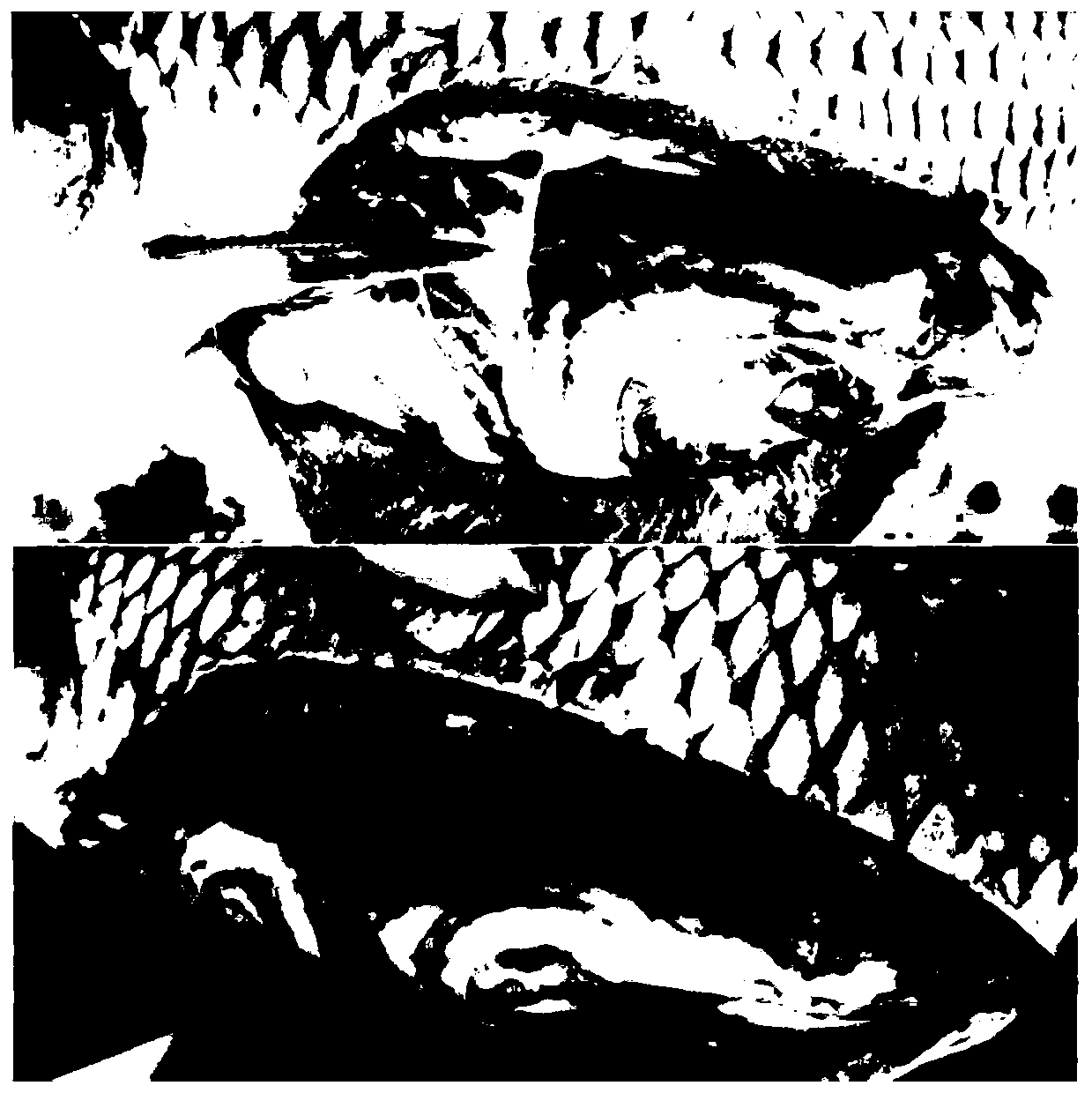Feed additive for protecting fish livers in case of oxidative stress and preparation method
A feed additive, oxidative stress technology, applied in animal feed, animal feed, climate change adaptation, etc., can solve the problems of high price of natural antioxidants, potential safety hazards, poor stability, etc., to protect liver health, improve efficacy, promote The effect of regeneration
- Summary
- Abstract
- Description
- Claims
- Application Information
AI Technical Summary
Problems solved by technology
Method used
Image
Examples
Embodiment 1
[0033] A preparation method for a feed additive for protecting fish liver under oxidative stress conditions, comprising the steps of:
[0034] Step (1), according to the mass percentage of 100%, weigh tea polyphenols 2%, yeast selenium 10%, vitamin C 20%, vitamin E 20%, licorice 18%, knotweed 13%, wolfberry polysaccharide 8%, talcum powder 9%.
[0035] Step (2), mixing the licorice and Polygonum cuspidatum weighed in the step (1) and performing superfine pulverization, passing the micropowder through a 300-mesh sieve to obtain a micropowder mixture.
[0036] Step (3), cooking the fine powder mixture at 100° C. for 4 hours, and then filtering to obtain a cooking filtrate.
[0037] Step (4), fully mix the tea polyphenols, selenium, vitamin C, vitamin E and Lycium barbarum polysaccharide weighed in step (1) to obtain a mixture, and then directly and evenly spray the cooking filtrate obtained in step (3) on the surface of the mixture .
[0038] Step (5), mixing the sprayed cook...
Embodiment 2
[0040] A preparation method for a feed additive for protecting fish liver under oxidative stress conditions, comprising the steps of:
[0041] Step (1), according to the mass percentage of 100%, weigh tea polyphenols 4%, yeast selenium 8%, vitamin C 22%, vitamin E 20%, licorice 20%, knotweed 15%, wolfberry polysaccharide 5%, talc Powder 6%.
[0042] Step (2), mixing the licorice and Polygonum cuspidatum weighed in the step (1), superfinely pulverizing, and passing through a 300-mesh sieve to obtain a fine powder mixture.
[0043] Step (3), cooking the fine powder mixture at 80° C. for 6 hours, and then filtering to obtain a cooking filtrate.
[0044] Step (4), fully mix the tea polyphenols, selenium, vitamin C, vitamin E, and Lycium barbarum polysaccharide weighed in step (1) to obtain a mixture, and then directly and evenly spray the cooking filtrate obtained in step (3) on the mixture surface.
[0045] Step (5), mixing the sprayed cooking filtrate mixture obtained in step...
Embodiment 3
[0047] A preparation method for a feed additive for protecting fish liver under oxidative stress conditions, comprising the steps of:
[0048] Step (1), according to the mass percentage of 100%, weigh tea polyphenols 6%, yeast selenium 12%, vitamin C 20%, vitamin E 20%, licorice 15%, knotweed 10%, wolfberry polysaccharide 10%, talcum powder 7%.
[0049] Step (2), mixing the licorice and Polygonum cuspidatum weighed in the step (1), superfinely pulverizing, and passing through a 300-mesh sieve to obtain a fine powder mixture.
[0050] Step (3), cooking the fine powder mixture at 100° C. for 5 hours, and then filtering to obtain a cooking filtrate.
[0051]Step (4), fully mixing tea polyphenols, selenium, vitamin C, vitamin E, and Lycium barbarum polysaccharide to obtain a mixture, and then directly and evenly spraying the obtained cooking filtrate on the surface of the mixture.
[0052] Step (5), mixing the sprayed cooking filtrate mixture obtained in step (4) with talcum pow...
PUM
 Login to View More
Login to View More Abstract
Description
Claims
Application Information
 Login to View More
Login to View More - R&D
- Intellectual Property
- Life Sciences
- Materials
- Tech Scout
- Unparalleled Data Quality
- Higher Quality Content
- 60% Fewer Hallucinations
Browse by: Latest US Patents, China's latest patents, Technical Efficacy Thesaurus, Application Domain, Technology Topic, Popular Technical Reports.
© 2025 PatSnap. All rights reserved.Legal|Privacy policy|Modern Slavery Act Transparency Statement|Sitemap|About US| Contact US: help@patsnap.com



